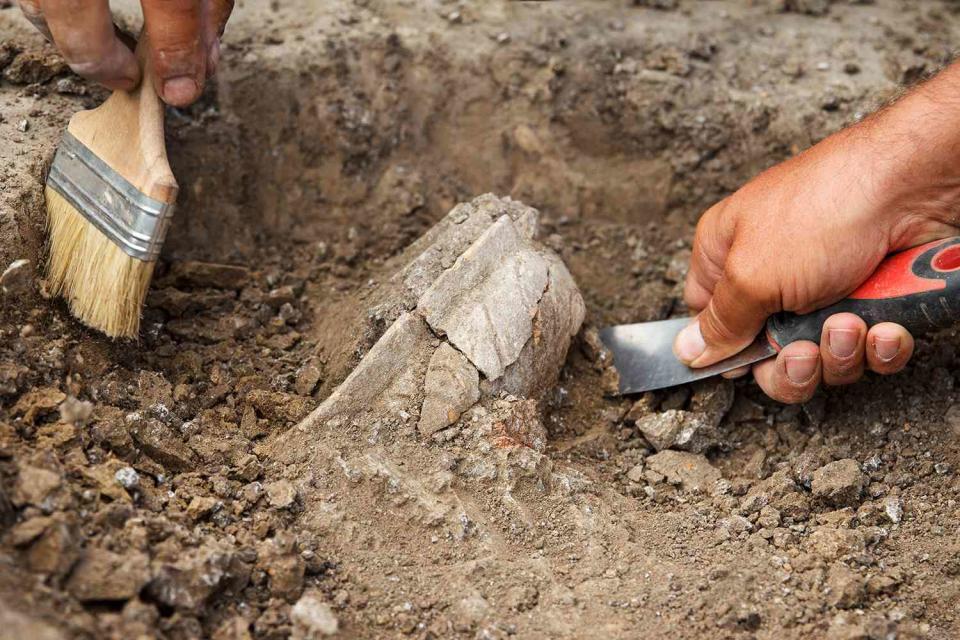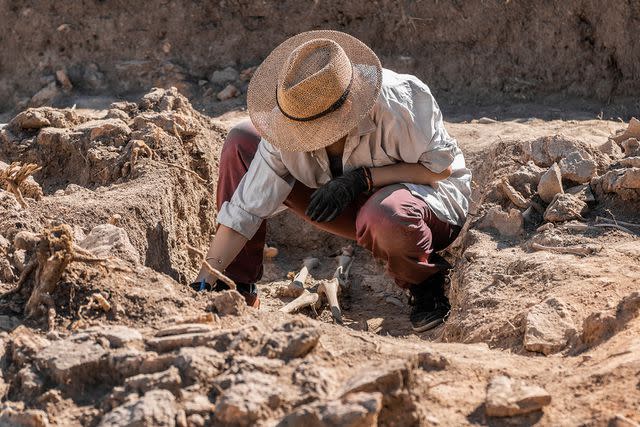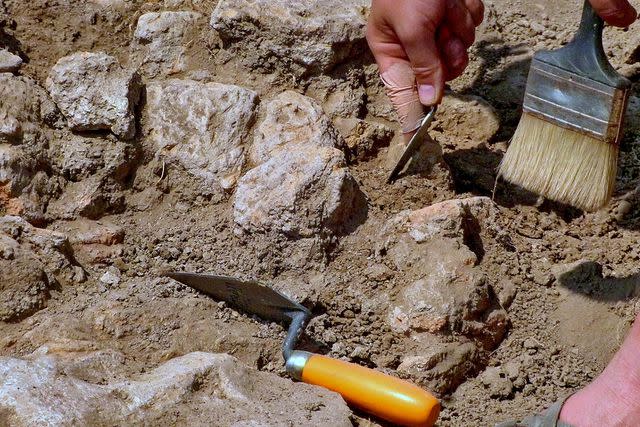1,000-Year-Old Ice Skate Discovered in Czech Republic, But It’s Not Made of Metal
Archaeologist Zdeněk Schenk and his team of researchers say the bone ice skate isn't the first of its kind

Getty
Archaeological excavations -- stock imageArchaeologists in the Czech Republic have stumbled across an incredible find — an apparent 1,000-year-old ice skate!
In an interview with Radio Prague International published on March 14, archaeologist Zdeněk Schenk, who led a team of researchers, said that the ice skate was made with an animal’s bone rather than metal.
Never miss a story — sign up for PEOPLE's free daily newsletter to stay up-to-date on the best of what PEOPLE has to offer, from celebrity news to compelling human interest stories.
“The object has a specific shape,” Schenk explained in the interview, per The Debrief. “On one side, it is curved into a tip which has a hole drilled in it, and there is another hole at the back.”

Getty
archaeologist excavating -- stock imageAccording to the outlet, the ice skate was discovered in the city of Přerov, near the Monrovia region during a “rescue” excavation in the basement of a home in the area.
Researchers with the Comenius Museum in Přerov had been on a different assignment for the house when the discovery was made, per Newsweek.
During the interview, Schenk said that the centuries-old innovation was resistant to rust thanks to the material being built from the bone of an animal, though it is unknown what type of mammal remains were used. He said it may have been made from a horse bone.
Related: Archaeologists Discover Dog Remains More Than 8,400 Years Old Buried Next to Human in Sweden
He also described how the ice skates were made.
“[The holes] were used to thread a strap through, which was used to attach the skate to a shoe or to a wooden sledge,” Schenk told Radio Prague International.
The researcher also added that there are not enough biological remnants to accurately date the archeological find, however, by examining other artifacts that the ice skate was found near, those involved with the discovery were able to determine how long ago the invention was used.

Getty
Archeologist -- stock image“It dates back to the time when there was a very important fortress in the area of the Upper Square,” the archaeologist said. “It served as a stronghold for Polish King Boleslav the Brave, who occupied Moravia at the time and had his soldiers stationed there.”
Schenk told Radio Prague International that whoever used the ice skates likely did so for more practical use instead of sporting or leisure activities seen in modern times.
Related: A Hungry Badger Accidentally Uncovered More than 200 Roman Coins, According to Archaeologists
“Rather than skating, they would shuffle along the frozen surface with the help of a stick or two,” Schenk said.
As remarkable as the discovery is, the archaeologist noted that similar finds have been reported in other European locations, possibly linking them to Nordic origins.
“We know of other similar pieces found in Central Europe and especially in north-western Europe, in Scandinavia,” Schenk told Radio Prague International. “They mostly come from the same time frame as the one from Přerov, and they are often found in 10th-century Viking settlements.”
"The bone skate from Přerov is nearly identical to skates recovered in northern Europe, for example from Birka in Sweden—a very famous archaeological site from the Viking Age—and also from York in England or Dublin in Ireland," the archaeologist also told Newsweek.
For more People news, make sure to sign up for our newsletter!
Read the original article on People.

